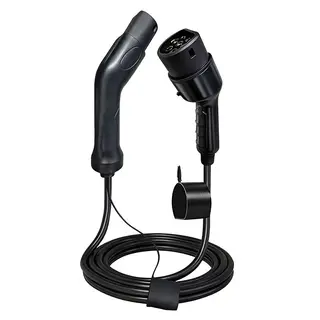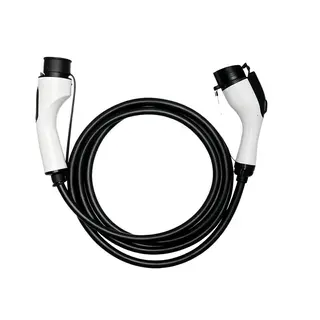With the increasing popularity of electric vehicles today, charging cables, as the core component connecting electric vehicles and charging facilities, play a vital role. They are not only channels for current transmission but also key to ensuring charging safety and efficiency. This article will explore in depth the characteristics, classifications, selection points, and use and maintenance of charging cables, helping you fully understand this seemingly ordinary yet technologically advanced product.
Charging cables are not only channels for current transmission but also key to ensuring charging safety and efficiency. So, what unique core characteristics do charging cables have? Next, we will explore these issues in detail.
Charging cables must ensure reliable insulation performance under various harsh environments. Whether it is high temperature, low temperature, humidity, oil contamination, chemical corrosion, or mechanical wear, the cable must ensure that no leakage, breakdown, or other dangerous incidents occur, thereby ensuring the safety of people and vehicles. This strong insulation performance is the foundation for the safe operation of charging cables and is also an important feature distinguishing them from ordinary cables.
Because charging cables need to be frequently moved, bent, dragged, and stored during use, they must have good flexibility and bending fatigue resistance. Even after thousands of bends and coils, the internal structure and external sheath of the cable must not be damaged, cracked, or deformed. This is crucial for ensuring long-term stable use, especially in charging scenarios that require frequent plugging and movement.
For DC fast-charging stations, the transmitted current can reach hundreds of amperes, generating a large amount of heat. Therefore, the conductor resistance of the charging cable must be very low to reduce heat generation. At the same time, the cable materials need to have high-temperature resistance and be able to dissipate heat effectively to prevent performance degradation or safety risks caused by overheating. In some high-power charging scenarios, liquid-cooling technology is even used, integrating cooling channels inside the cable. The coolant circulates to carry away heat, allowing the use of thinner conductors, greatly reducing cable weight and improving user experience.
Charging cables need to operate normally in outdoor environments ranging from extreme cold (as low as -40℃) to extreme heat (up to +70℃ or higher). The outer sheath must not become brittle and crack at low temperatures, nor soften and stick at high temperatures, and it must resist ultraviolet rays, ozone, and rain corrosion. This wide temperature adaptation range ensures that charging cables can operate stably under various climatic conditions, meeting charging needs in different regions.
Inside charging cables, there are not only high-power current cores but also low-voltage signal lines for control guidance and communication (such as CAN bus). To ensure stable communication between the charging station and the vehicle BMS (Battery Management System) and maintain controllability of the charging process, the cable must adopt effective shielding design to protect these weak electrical signals from electromagnetic interference caused by the high-power part. This precise signal transmission and anti-interference capability is key to achieving intelligent and safe charging.
Under the premise of meeting all performance requirements, charging cables strive for lightweight and softness. Lightweight design makes the cable feel lighter, easier to hold and store, thereby enhancing user experience. This is particularly important for users who need to frequently move and operate the charging cable, reducing the burden during use.
Different application scenarios and charging needs impose different requirements on the performance and specifications of charging cables. Therefore, charging cables are divided into different types according to their functions and usage scenarios.
AC charging cables usually carry smaller current and lower voltage, so the cable diameter is relatively thin, focusing more on flexibility and portability for daily use. They are suitable for EV charging scenarios with lower speed requirements and smaller charging power. The design of AC charging cables is relatively simple but still needs to meet basic insulation, weather resistance, and anti-interference performance requirements to ensure the safety and reliability of charging.
DC fast-charging cables face tremendous challenges, needing to carry high currents and voltages, making them thick, heavy, and rigid. The technical difficulties lie in solving heat generation caused by large currents, insulation requirements for high voltage, and electromagnetic interference issues. For high-power charging (such as above 350kW), DC fast-charging cables even use liquid-cooling technology, integrating cooling channels inside the cable. The coolant circulates to remove heat. The design and manufacturing of such cables require higher technical levels and stricter quality control to meet the requirements of fast and safe charging.
Choosing a good charging cable is crucial to ensuring charging safety and improving charging efficiency. The following are key criteria for selecting charging cables:
Number of cores: Charging cables typically have 2, 3, 4, or 5 cores, with or without signal control lines. Choose the appropriate number of cores according to different charging needs and application scenarios.
Conductor surface treatment: The conductor surface can be tinned or untinned. Tinned conductors have better oxidation and corrosion resistance but are relatively more expensive.
Wire cross-section specifications: Recommended cross-section specifications include 0.5mm², 1mm², 1.5mm², 2.5mm², 4mm², 6mm², 10mm², 16mm², etc. Select the appropriate cross-section according to the charging cable’s power and current to ensure the cable can transmit current safely and stably.
Material selection: Standard-compliant materials must be used as insulation layers wrapping the conductor. Using materials outside the specified standards is not allowed.
Insulation process: Insulation must be extruded, solid, and uniform. Removing the insulation must not damage the insulation itself or the conductor or the tin layer mentioned earlier.
Insulation thickness: The insulation thickness must meet the specified standard values. The average thickness must not be less than the specified value, and the thinnest part should not be less than 90% of the specified value.
Material and process: The inner sheath must be made of the same material as the outer sheath or insulation and extruded over the insulated core. It is allowed to embed gaps between insulated cores to form an actual circular shape.
Performance requirements: No harmful effects should occur between the inner sheath and insulation. The inner sheath must not stick to the insulated cores. The inner sheath thickness must meet standard requirements.
Shielding material: The shield made of bare copper wire or tinned copper wire braid should cover the inner sheath. The nominal diameter of the copper wire must meet the values specified in charging cable standards.
Shielding performance: The total number of braids, twist angles, and fill factor within 100mm of shielding length must fully meet standard requirements. Good shielding can effectively prevent electromagnetic interference and ensure the stability and accuracy of signal transmission.
Material and process: The specified sheath material must cover the shielding or twisted cores. The outer sheath must be a single-layer extruded sheath, closely fitting, but must not stick to the shield or cores.
Performance requirements: The sheath thickness must meet standard values. The average thickness must not be less than the specified value, and the thinnest point should not be less than 85% of the specified value.
AC cables: Commonly 300/500V.
DC cables: Must support higher voltages, such as 1000V or 1500V; all cores and between cores and shield must pass strict high-voltage tests (e.g., 2000V/5 minutes).
Insulation resistance: Must be very high to indicate excellent insulation performance, effectively preventing leakage and ensuring charging safety.
Working capacitance between signal lines: Strict limits ensure transmission speed and quality, which is critical for stable communication between the charger and vehicle BMS.
Strict testing: Cables must pass repeated bending tests (tens of thousands of times), twisting, oil resistance, high and low temperature aging, UV exposure, etc., to simulate all possible conditions during their lifecycle. Only cables passing these tests can ensure reliability and durability in actual use.
Clear markings: Cables must have clear, continuous markings, including manufacturer, model, specification, voltage rating, and meter markings. Internal core colors strictly follow national standards, e.g., DC positive (DC+) is orange, DC negative (DC-) is blue, protective ground (PE) is yellow-green, control pilot (CP) is purple, etc., to facilitate correct wiring and identification.
As a key component connecting the charger and electric vehicle, proper use and regular maintenance of charging cables can not only extend cable life but also ensure safe and efficient charging. The key points are as follows:
When selecting a charging cable, first calculate the required current based on the charger’s power and voltage.
Single-phase AC: I = P/U. For example, a 7kW single-phase charger → I = 7000/220 = 32A → use a 4mm² copper cable.
Three-phase DC: I = P/(U*1.732). Select the appropriate cable size according to the calculated current to ensure safe and stable current transmission.
All chargers should have neutral and ground lines. Single-phase chargers require three-core cables; three-phase chargers require five-core cables. Proper connection of neutral and ground is crucial for charging safety and can effectively prevent leakage accidents.
Although charging cables have good insulation, long-term outdoor use inevitably causes wear. To ensure safe and normal operation, regular inspection of the cable is necessary, checking for exposed wires at switches and sockets. Only by doing so can the safety and durability of charging cables be ensured.
Stay away from water sources: Although charging cables are waterproof, long-term exposure to moisture still poses risks. When installing, avoid water sources to prevent short circuits caused by dampness.
Choose suitable surfaces: For mobile charging cables, use dry, flat surfaces to ensure safe use.
Avoid overloading: Professional charging cables have multiple outlets for different power levels. Avoid using multiple high-power devices simultaneously on the same charger to prevent damage.
Charging cables are core components of electric vehicle charging systems, and their performance and quality directly affect charging safety and efficiency. This article has provided a detailed introduction to the complex design, various characteristics, classifications, selection criteria, and use and maintenance of charging cables. Through this content, readers can fully understand the importance of charging cables and how to select and use them correctly. In short, choosing the appropriate charging cable and performing proper maintenance is key to ensuring safe and efficient electric vehicle charging.



